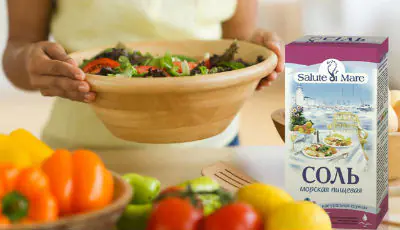In the spring, when there is an acute shortage of vitamins, you especially crave something fresh, aromatic, and smelling like spring. Spring vitamin salads are a wonderful appetizer after a long, boring winter... Knowing the little tricks in preparing salads, you can turn any set of vegetables into a culinary masterpiece.
Secret 1. Choose the right vegetables
The best vegetables for salad are freshly picked from your own garden without fertilizers or pesticides. If you buy vegetables at markets or supermarkets, you should remember:
- Vegetables and herbs should be chosen fresh and of natural color.
- The surface of the vegetables should be dry, without damage or rotten elements.
- You need to buy vegetables that are in season. Otherwise, to avoid nitrate poisoning, you need to soak vegetables and herbs for an hour in cold water before preparing the salad, and also thoroughly peel the skin.
- Do not buy greens and vegetables for future use. The longer they are stored, the less vitamins they contain. And if you cannot do without this, then you need to store each type separately in tightly tied bags.
- Vegetables are washed immediately before cooking, but greens can be washed in advance and still wet, packed in a bag and sent to the refrigerator - this way they will retain freshness.
Secret 2. Preparing vegetables to preserve maximum vitamins
Most vitamins are rather unstable substances that are destroyed by exposure to high temperatures, sunlight, contact with air, iron, etc.
Therefore, firstly, to preserve valuable nutrients, vegetables for salad must be chopped immediately before cooking. In general, it is better not to cut greens, but to tear them with your hands.
Secondly, you need to choose the right dishes. Glass and ceramic dishes and stainless steel items are suitable for preparing salads.
Thirdly, you should be careful when choosing a knife - it must be well sharpened and made from the “right” material. Ceramic knives are considered ideal for salad - unlike metal ones, they do not promote oxidation and always remain sharp.
Fourthly, vegetables need to be cut as large as possible for the same reason of oxidation. In general, it is better not to cut greens, but to tear them with your hands.
Secret 3. The right spices are the key to a tasty and healthy salad
Green onion leaves, sprigs of dill, parsley or basil are not only an additional flavor to your favorite salad, it is also a variety of vitamins, mineral salts, trace elements and essential oils in your plate.
In addition, every cook “adjusts” the taste of the salad by adding salt. You should always remember that you should salt your salad with the right salt. Today, many people know about the benefits of sea salt and prefer to use sea salt. Sea salt is a healthier and healthier product than other existing types of salt.
If you want your dish to be truly healthy, then it is better to opt for edible sea salt TM “Salute di Mare”, which translated means “sea health”. This is an absolutely natural product obtained by natural evaporation of sea water under the influence of the southern sun and wind. This unique natural method of obtaining salt allows it to retain all the micro- and macroelements that prevent diseases, maintain the internal balance of the body and give a clean, fresh, elegant touch to food, gently emphasizing the taste of any dish.
Sea salt TM “Salute di Mare” does not contain chemical food additives, which are often used to make salt friable. Completely dissolves in body fluids without accumulating in tissues and internal organs.
Secret 4. Salad dressings
Most often, salads made from fresh vegetables are usually seasoned with vegetable oil or sour cream. However, recently traditional gas stations recommend



